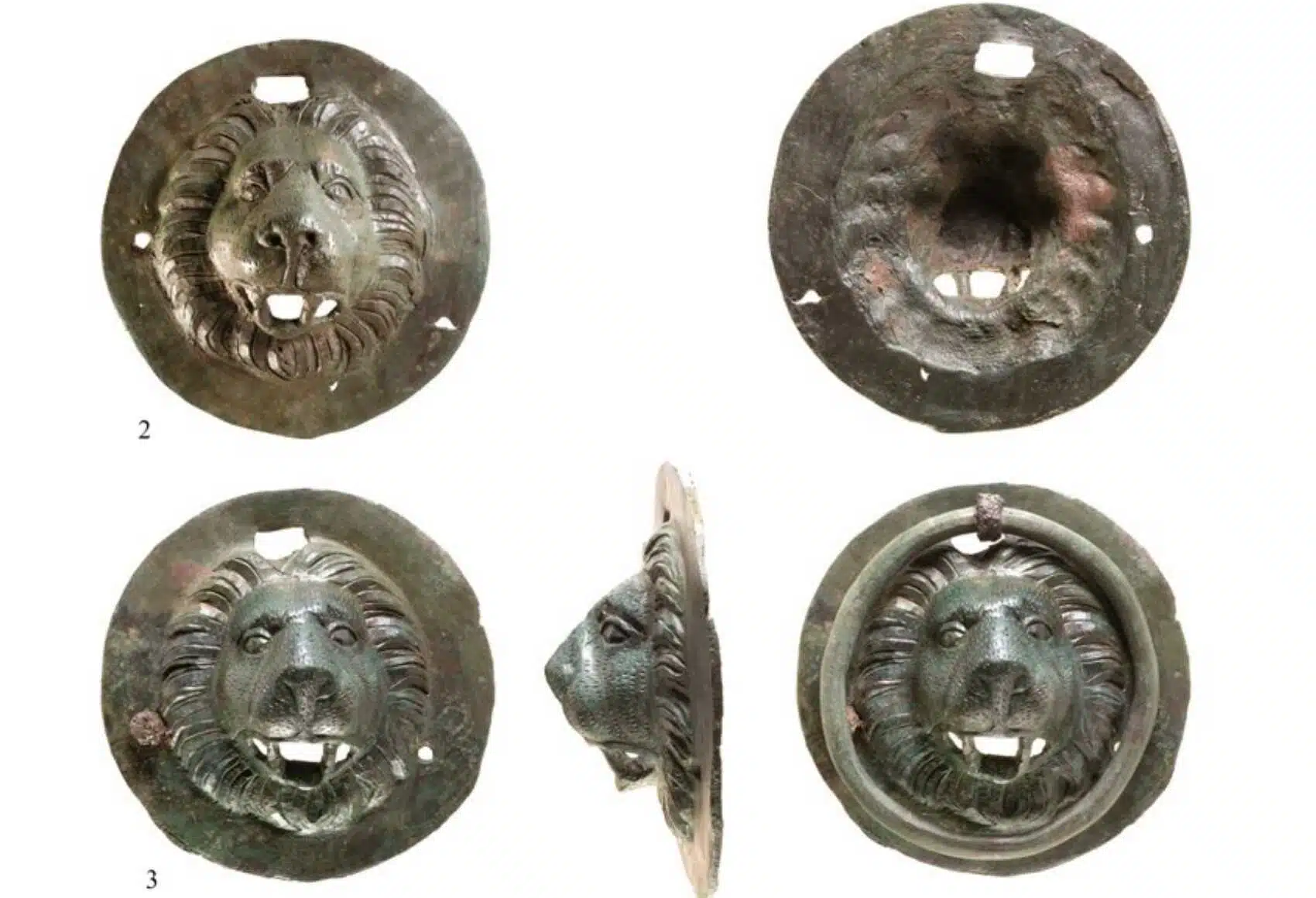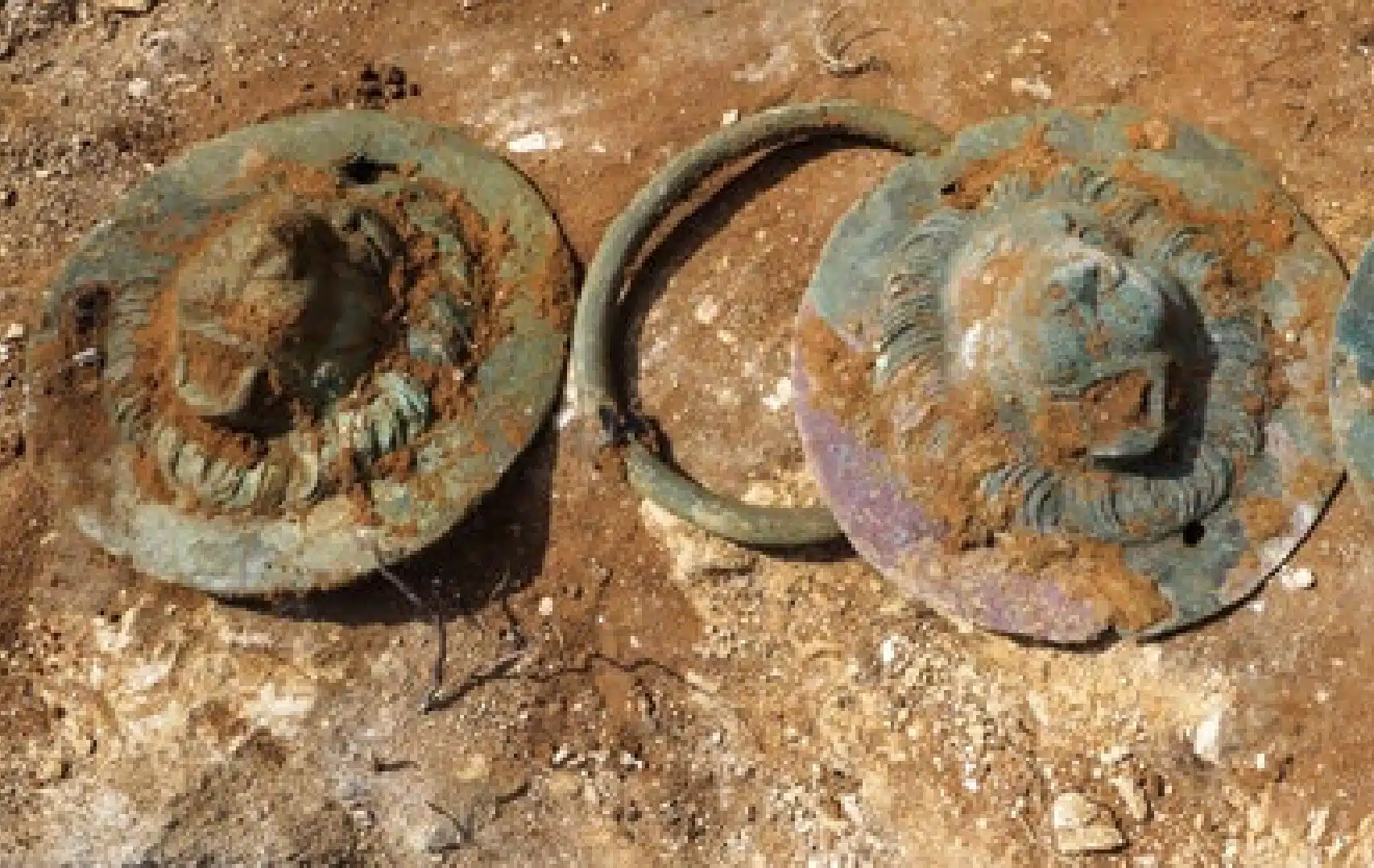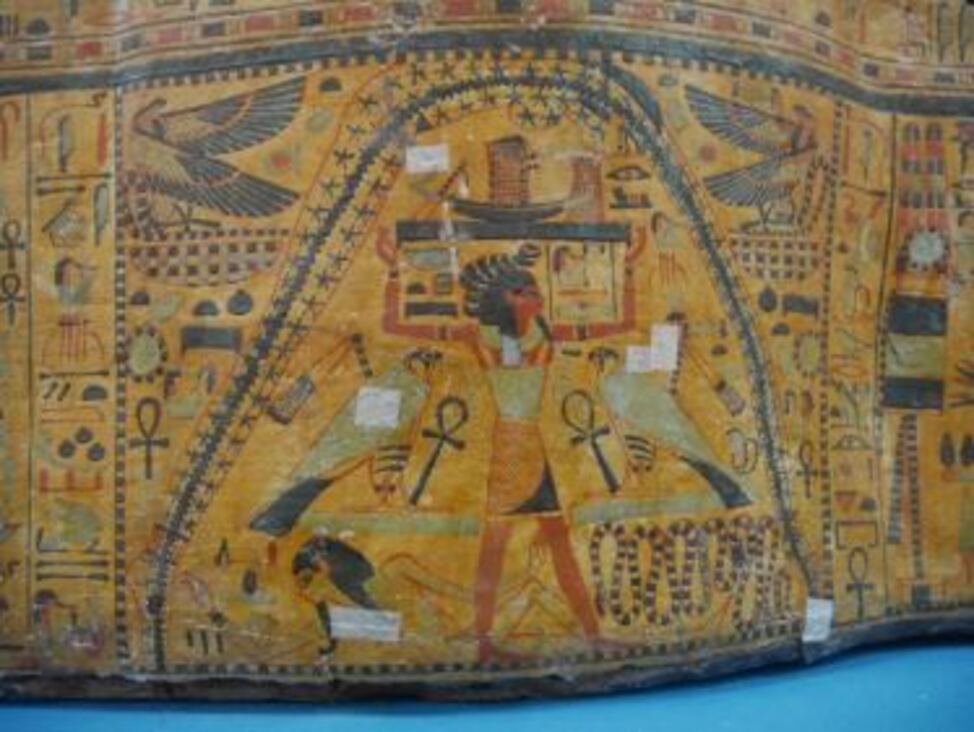A team of archaeologists has uncovered a set of rare Roman-era bronze artifacts from a tomb site in southern Israel, believed to date back nearly 2,000 years. Among the most intriguing finds are four bronze handles adorned with sculpted lion heads, discovered during a 2018 salvage excavation at Khirbat Ibreika, near the modern city of Netivot.
The artifacts were found in Tomb T6, one of eight burial chambers at the site. The sealed chamber also contained human remains, twelve glass vessels, and an iron nail — all likely part of a complex Roman funerary ritual.
What caught the researchers’ attention were the lion-headed disks, stacked carefully in a corner of the tomb. Each featured a prominent lion face with a metal ring inserted not through the mouth, as seen in similar designs, but through the top of the head. This positioning, along with their deliberate placement, suggests they were part of a ceremonial arrangement — possibly attached to a wooden coffin that has long since decayed.
Function or Symbol?
Scholars are considering two primary interpretations:
Functional use: The bronze disks may have served as handles for a coffin, allowing pallbearers to carry it using rods inserted through the rings.
Symbolic role: In Roman culture, lions symbolized strength, nobility, and protection — especially in the context of death and the afterlife. These items might have been protective talismans intended to guard the deceased during their journey to the next world.

Hidden Meanings
The presence of such ornate items in only one tomb suggests the individual buried there held a special status, possibly as a high-ranking officer or official. Some experts have even speculated a connection to Mithraism, a secretive Roman cult with Persian roots, popular among soldiers and known for using lion and bull imagery in its rituals.
Other researchers have explored a potential link to the Samaritan community that lived in the region during that period. However, the depiction of animals — especially lions — contradicts Samaritan religious norms, making this theory less likely.
Cover Image: Three of the lion-head discs retrieved from Roman-era Tomb T6. Credit A. Peretz / Israel Antiquities Authority





